It’s heard in drips, in flows of water. It’s counted in numbers, echoes in poetry, called into the air in plaintive cries, sighing instruments, and the decay of piano notes. When a crisis reaches us somewhere that even words fail, maybe we need sounds and music to tell the story alongside science.
That’s a feeling revisiting Glacier Music II, by artists Anushka Chkheidze, Eto Gelashvili, Hayk Karoyi, Lillevan, and Robert Lippok. It’s out now on Establishment, my label project / label counterpart to CDM, releasing on book and album the latest culmination of a project by Goethe-Institut Georgien in Tbilisi. As I write this, in the background is the refrain of a poetic mix assembled by Robert. The news has gotten more ominous, but then that’s where we need music the most. Music doesn’t shy away from what scares us – it tacks into the storm and darkness. Science and research can help us plot the chart accurately, but then we have to grip the wheel.

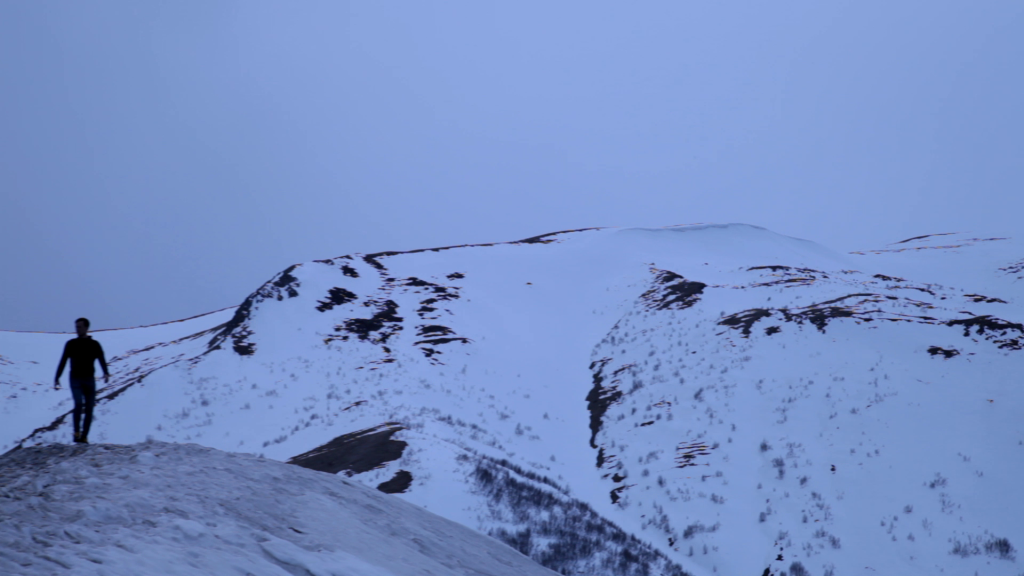
And so with a huge debt of gratitude to Robert and the artists, Barbara and team at Goethe-Institut, I think it’s the right time to talk about the release and the return of this label project – because in the end putting out music is an act of faith and hope, one listener at a time.
Across Germany, Armenia, and Georgia, these artists composed a sonic call I find myself visiting and revisiting.
The album
Tracklist
1. m3 /s – Robert Lippok
2. Անսահման / Infinite – Hayk Karoyi, Robert Lippok
3. Sleeping glacier – Anushka Chkheidze, Eto Gelashvili, Hayk Karoyi
4. Microseismic – Anushka Chkheidze, Sounds of Matterhorn (Meyer/Weber/Beutel)
5. აისი / Aisi – Anushka Chkheidze, Hayk Karoyi
6. The moon is white – Anushka Chkheidze
7. Light breaking – Anushka Chkheidze, Hayk Karoyi
8. მზე შინა / Sun inside (live) – Anushka Chkheidze, Eto Gelashvili, Hayk Karoyi, Robert Lippok
9. Juta – Anushka Chkheidze
10. Numbers drop – Anushka Chkheidze, Eto Gelashvili, Hayk Karoyi, Robert Lippok
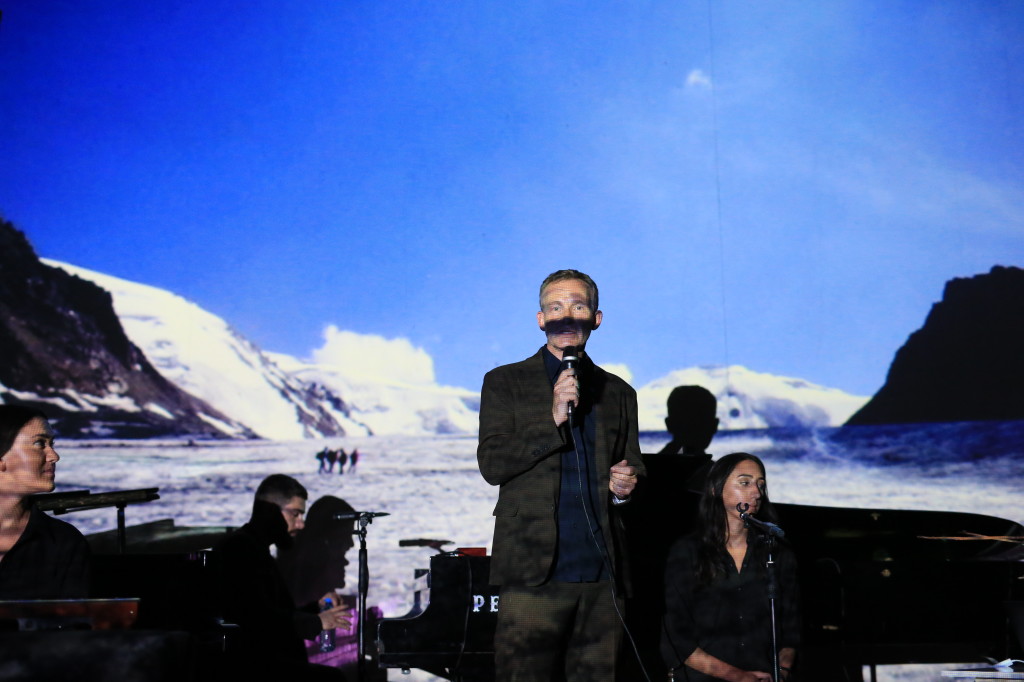
Music, collaboration, and hope
Glacier Music as a project has a life that weaves its way across borders and from one year to the next, expanding and strenghtening even as the glaciers are receding. Its persistance is a perpetual story of labors of love, thanks in no small part to the leadership of Barbara von Münchausen of Goethe-Intitut who initiated the project. Glaciologists meet musicians, starting in Kazakhstan, then on to Uzbekistan, Tajikistan, Kyrgyzstan, Germany, Italy, Poland, and finally the Caucasus of Georgia and Armenia – where we catch up with the story. The Black and Caspian Seas are in view next.
For all the beauty of the music, there’s a dark reality to face.
“The ice cracks loudly in the mountains; glaciers turn into roaring rivers,” explains Barbara. And the problems facing the people who live around the glaciers is real – a microcosm of a world in grave danger. From our interview for the book on Establishment, Barbara speaks to that reality on the human scale:
Especially in arid Central Asia, the glaciers play an existential role as water reservoirs for the water supply of cities and villages. The glacier in Kazakhstan, which the team of the Goethe-Institut climbed to make sound recordings, has always been called “Tujuksu,” which is the Kazakh word for “retained water.” This impressive ice structure has shrunk by 2/3 of its volume since the 1950s. Predictions confirm that there will be no more glaciers in Central Asia in about 30 years.
If there is a hopeful note here, it’s that these musical projects demonstrate the potential of collaboration and closeness. These artists created something really beautiful, in a process we got to document for the book. We live in a dystopia that seems to readily shut off human potential; in contrast, these artists found ways to grow in their work together.
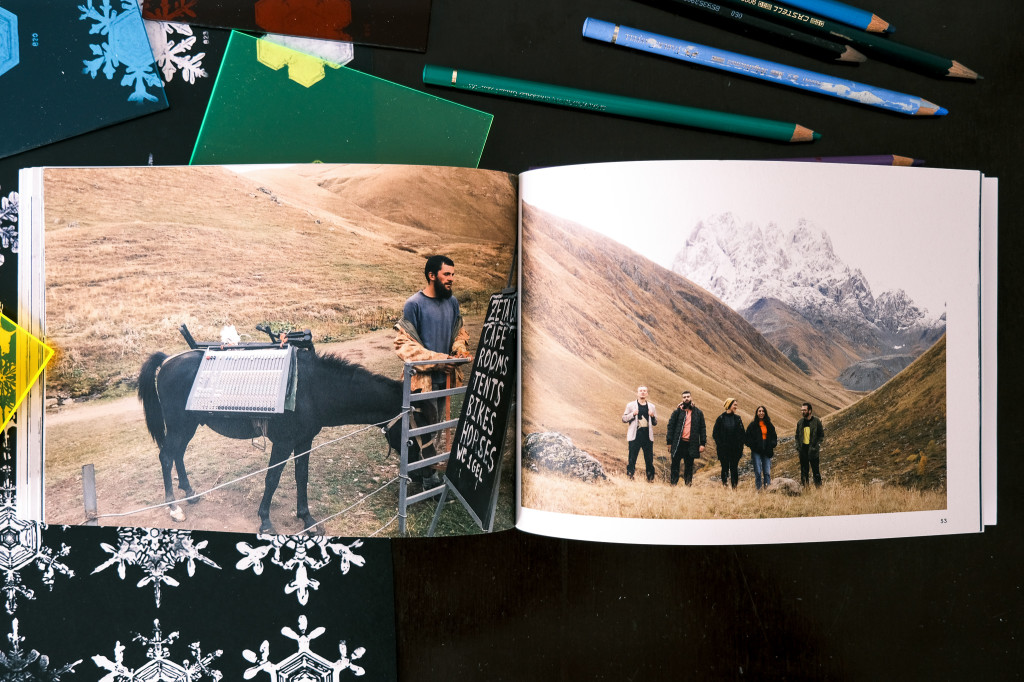
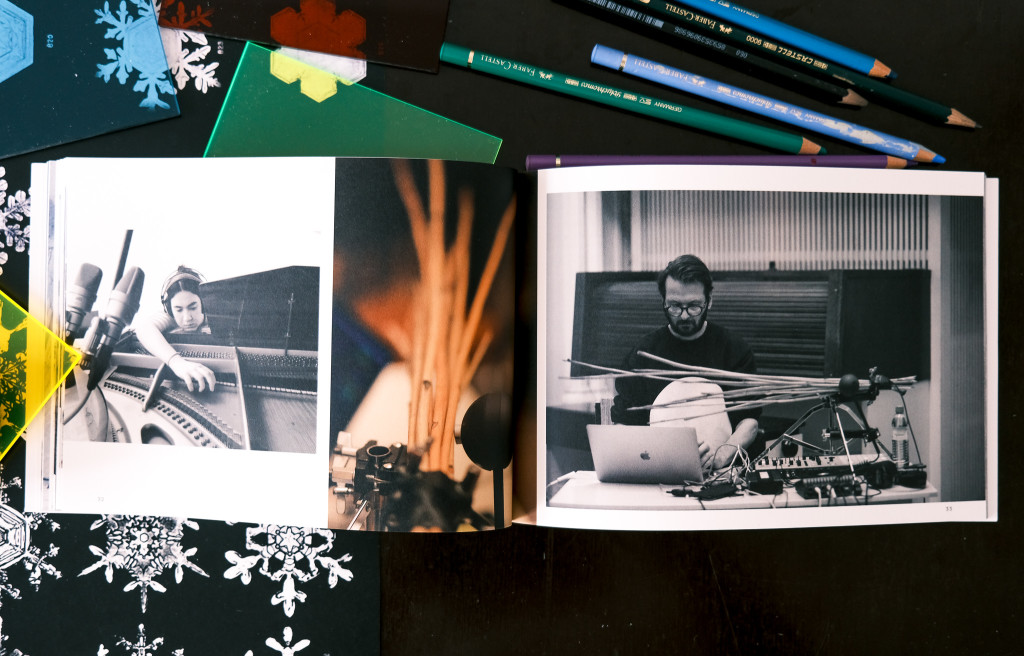
Making the book was important to me for that reason, too – even with the music and interviews, there was a sense of some ineffable connection between people here, too. The intimate and impromptu images from Lillevan, Robert, and others helped capture that in the abstract. Sometimes that sentiment was echoed in recalled folk music – “you are a vineyard newly blossomed” (shen khar venakhi) being a well-known Georgian favorite also fits.
Or as Hayk put it, “if the range of the person is wide, everything they do is wide.”
We may need that kind of endurance and emotional closeness to tackle what’s next.
But music made in service of environmental messages also needs the scientists. There’s a chance to work together. And part of the strength of the Glacier Music project – part of the appeal to me to help support their work on it in any way I can – is that interweaving of scientific and creative understanding, bringing those two cultures back into concert.
Sounds of Matterhorn and Iran, vital monitoring
Artists paired with geologists, with further support from Goethe-Institut. Mixed in with track 4 of the release we put out you can hear some of those sounds, taken from the Sounds of Matterhorn (CC-BY) Matthias Meyer, Samuel Weber, and Jan Beutel:
Monitoring Climate Change at the Edge of the Cloud
(In new applications for machine learning, there’s also potential to use AI techniques to better process sound data – the talk here has a beautifully poetic title, but it comes from a machine learning talk.)
Here we travel from the Caucasus of Georgia over to the Swiss Alps, and specifically Matterhorn’s Hörnligrat and some geophones – think mics for the Earth. (See, this story has something for fans of both Armenian folk music and field recording equipment, of course):
I asked Matthias Meyer from the project, at ETH Zurich, to share what this means to geologists. Here’s his full abstract. The long and short of it – there are serious threats as these environments collapse, and data is important – with a combination of recording techniques and AI to clean up the data helping improve accuracy:
Global warming is a defining challenge of our time with devastating consequences for local habitats. High mountain areas are particularly affected by global warming leading to a decline of their cryosphere (glaciers, snow cover and permafrost). In high-alpine steep bedrock, permafrost thaw decreases the stability of mountain slopes leading to an increase of rockfalls and landslides and thereby putting life and built infrastructure at risk.
Monitoring these environmental changes is important for natural hazard warning and understanding the geophysical processes leading to such hazards. Moreover, by providing evidence from large-scale, long-term measurements, environmental monitoring helps to bolster scientific findings and can call attention to the
immediate impacts of climate change. The rise of wireless sensor networks offers a range of possibilities for environmental monitoring enabling large-scale deployments with high spatial-temporal resolution using many different sensor types. The cheap and diverse sensors can be installed at hard to reach places with little available networking or power infrastructure. However, the resulting datasets (often heterogenous and long-term measurements) require a complex data analysis. Moreover, networking or power failures often lead to an error-prone data collection and a fragmented and noisy datasets. Analyzing these datasets typically requires dedicated domain-expert knowledge which can not be scaled to long-term monitoring datasets. Machine learning provides options to extract information automatically but these techniques usually require a clean dataset for training and their performance is strongly affected by differences in the distribution of training and test data.A long-term monitoring deployment at the Matterhorn Hörnligrat field site located in Zermatt, Switzerland at 3500 m a.s.l.. The Matterhorn field site was of special interest to conduct research on permafrost in steep bedrock as a result of a rockfall in summer 2003. Uncovered ice in the failure plain raised questions about the link between thawing permafrost and the rockfall. Located on a ridge, accessible by a frequently used climbing route, the location provided good preconditions to supplement previous studies on thermal behavior of steep permafrost bedrock [GKK+ 04, GHH04, NGK+07] with evidence from long-term, in situ measurements. Starting in 2007 with an initial sensor installations [THGT07, HTB+ 08], the deployment subsequently grew into a multi-sensor wireless sensor network [BGH+ 09a] using a heterogeneous set of sensors types, including thermal sensors, crackmeters, a high-resolution camera [KYB09], GNSS receivers [BBF+11b], local weather station, net total radiometer, acoustic emission sensors [GBG+ 12], accelerometer and seismometer [WFM+ 18].
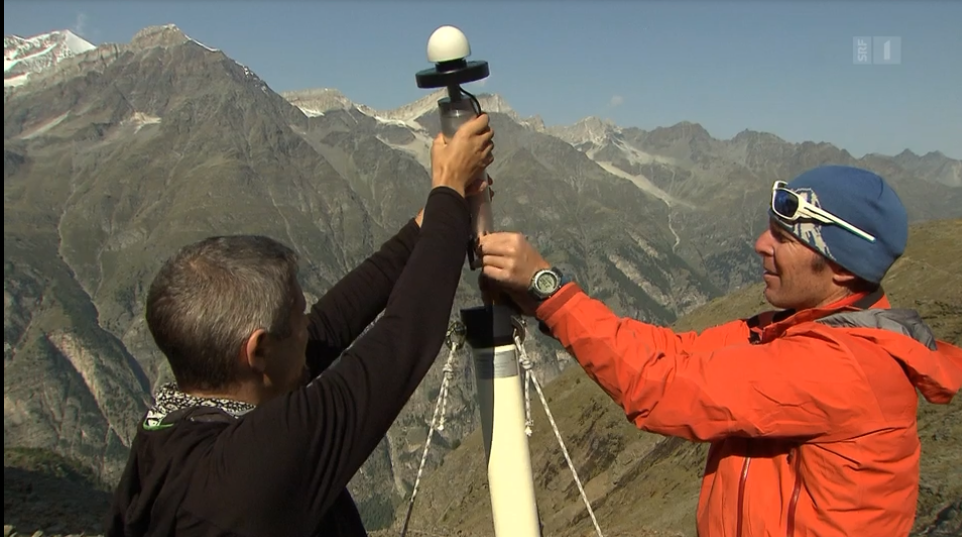
(Oh, and speaking of arts-science collaborations, Matthias confessed he didn’t know what to expect from the album but “turns out I really like it!”)
He points out his work is part of a larger project – so just as we had to work across cultures and musical traditions, and find connections with science, scientists too are finding the necessity of work across engineering and environmental science:
https://www.permasense.ch/en.html
Sometimes that work involves pretty mundane but essential engineering solutions – just how to make the equipment hold up under tough conditions and how to deploy it. (So yeah, there’s not just fancy futuristic AI – there’s also some good, old-fashioned mechanical engineering up in the snow and clouds so when your sensors freeze their machine a**es off, they still work.)
It’s encouraging to me, though, to think that as artists work in mic sensors and AI, and in musical practice and collaboration in impacted areas, there are new points of contact to come together and understand one another’s vital work.
Meanwhile, in Iran. Robert Lippok made a gorgeous mix of music, including from the album – woven together in ways that shed new light on it – for Tehran-based Beshknow radio. I’ll share that soon, but part of the mix included field recordings from another glacier in Iran. Maryam Razi, Creative Director at Beshknow, explains:
It is recorded in the Kholeno mountains in north of Tehran. Apparently it used to be a big glacier according to what the local old people told us about. Due to the severe drought, what you hear is not like a leaking sound but like pouring down water which is heartbreaking.
This glacier is located where the snow water passes through – and this new path of snow water, which is the result of excessive heat in spring and summer, accelerates the glacier’s melting process. Iran is a dry country in overall and this drought is causing many irreplaceable damages…
The image they made for the radio show features a photo taken at that glacier, where the sound was recorded, as captured by Behsknow co-founder Dariush Sardari.
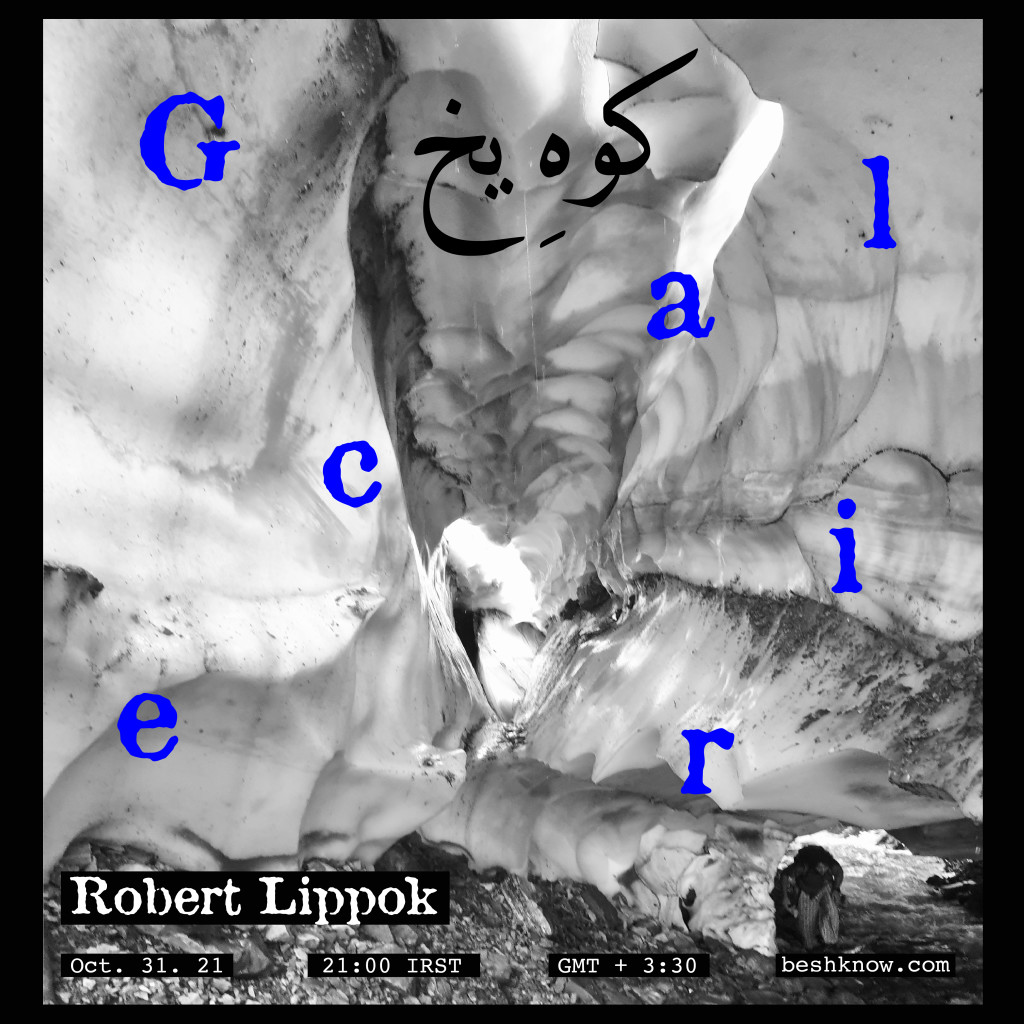
Beshknow is well worth adding to your bookmarks for listening:
Glacier Music II
I do hope you’re able to enjoy the project and – I still have books to send out.
A project of Goethe-Institut Georgien
Music and book (digital/physical) by Establishment
Glacier Music II grew out of a journey – a shared trip into the icy Greater Caucasus mountains of Georgia, as artists from Armenia, Georgia, and Germany collected visceral sensations of nature to channel into potent musical collaborations. Those mountains form a thread across neighboring but diverse musical traditions, and so from this fragile environment, an international collaboration between multi-talented producers and performers sound a poignant, personal note of urgency.
Berlin’s established talents Robert Lippok (in sound – the Raster-media artist) and Lillevan (in visuals) join rising stars of the Caucasus – Anushka Chkheidze lends her harmonic imagination and detailed, intimate piano work; her prepared piano gestures (on ‘Microseismic’) match the sculptural explorations of Robert’s experimental electronics. Eto Gelashvili’s voice carries through like a brisk mountain air; Hayk Karoyi combines a deep knowledge of traditional Armenian folk instruments with innovative compositional efforts. The group’s affection for one another glows out of the music across the release, as evidenced in the easily-flowing live inclusion.
But that mission to speak of an immediate climate crisis is embedded deeply in the work – from the soft deep bass of Matthias Meyer and team’s geophone recordings of shifting ice in ‘Microseismic’, to the imperative sound of time and tragedy pressing forward in the closing Numbers Drop.
Ancient Caucasian tradition meets contemporary sound geographies, where electronics meld with more organic sound influences. The resulting music is at once arresting and intimate, bringing the listener closer to the nature that surrounds us.
https://establishmentrecords.bandcamp.com/album/glacier-music-ii